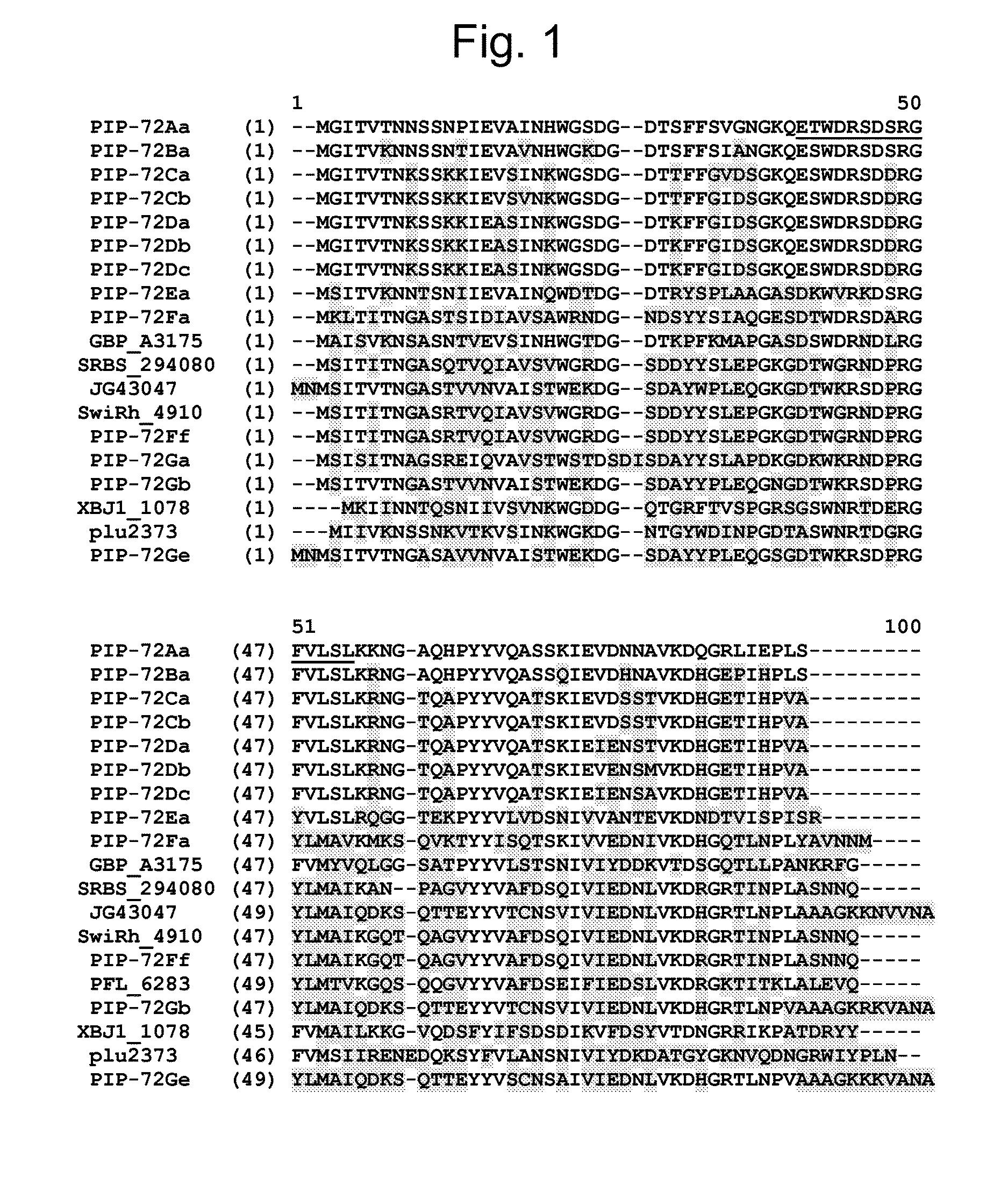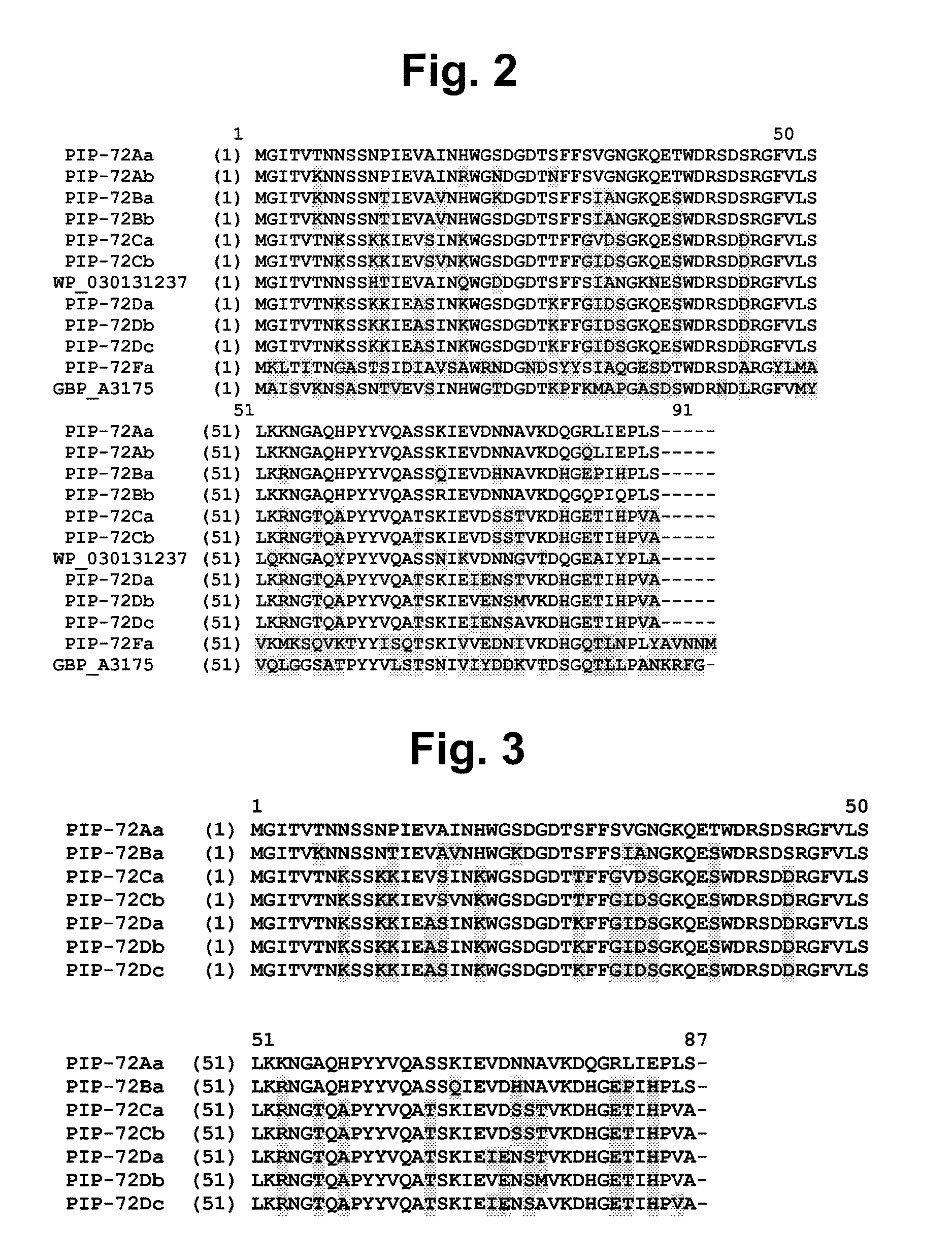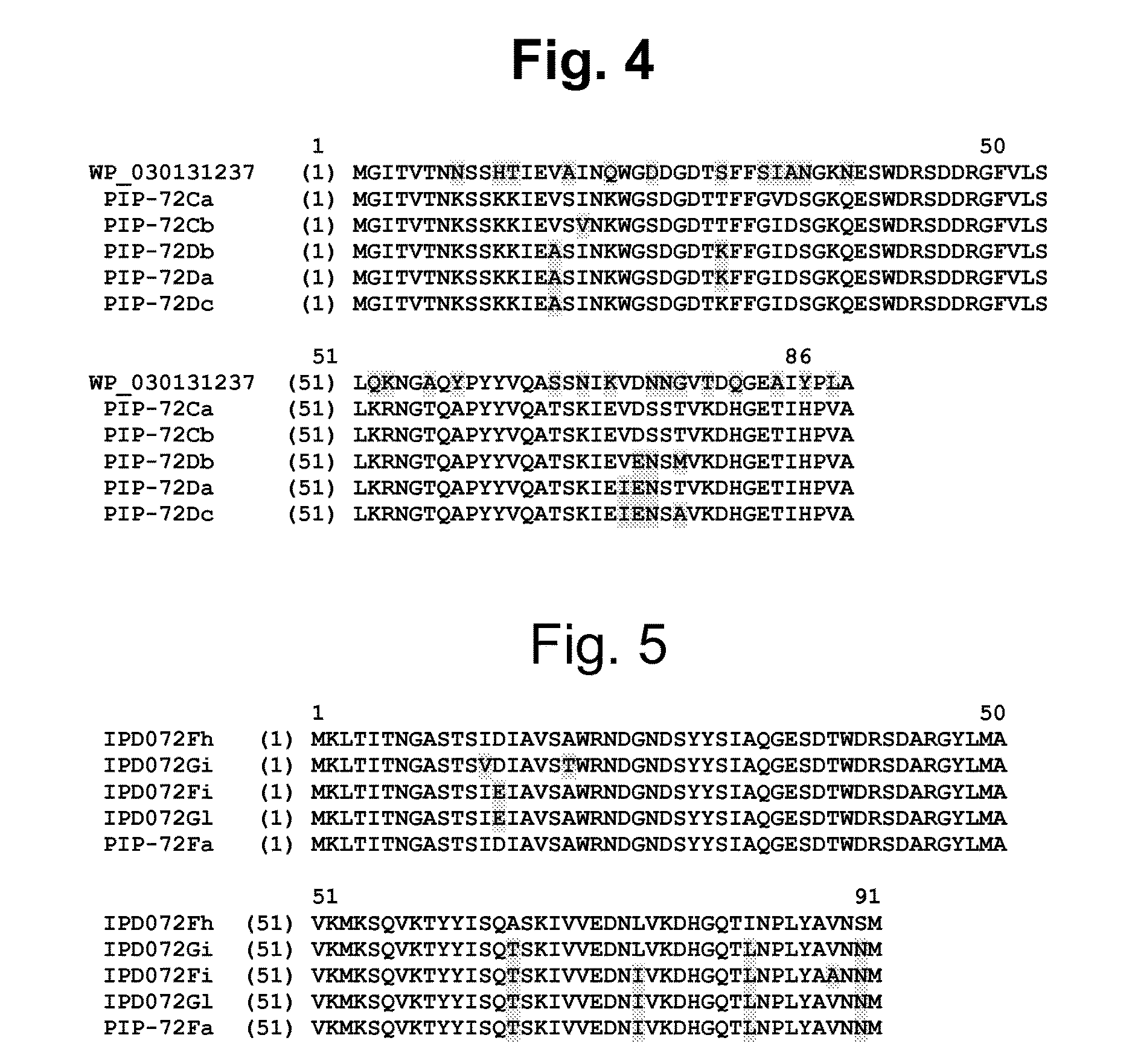Insecticidal proteins and methods for their use
- Summary
- Abstract
- Description
- Claims
- Application Information
AI Technical Summary
Benefits of technology
Problems solved by technology
Method used
Image
Examples
example 1
Identification of a Insecticidal Protein Active Against Western Corn Root Worm (WCRW) from Strain SS143D5
[0484]The WCRW (Diabrotica virgifera virgifera) active protein PIP-72Aa was identified by protein purification, liquid chromatography mass spectrometry (LC-MS / MS) and PCR cloning from Pseudomonas chlororaphis strain SS143D5 as follows:
[0485]Insecticidal activity against WCRW (Diabrotica virgifera virgifera) was observed from a clear cell lysate of SS143D5 grown in Trypticase soy medium (Tryptone 17 g / L, enzymatic digest of soy meal 3 g / L, Dextrose 2.5 g / L, Sodium Chloride 5 g / L, K2HPO4 2.5 g / L) and cultured overnight at 2600 with shaking at 250 rpm. This insecticidal activity exhibited heat and proteinase sensitivity indicating proteinaceous nature. For protein extraction, cells were thawed and re-suspended in 50 mM sodium acetate buffer, pH 5 (buffer A) containing protease inhibitor cocktail V from CalBiochem. A crude cleared lysate was obtained by passing the cells through a ho...
example 2
Identification of Homologs of PIP-72Aa
[0491]Gene identities may be determined by conducting BLAST (Basic Local Alignment Search Tool; Altschul, et al., (1993) J. Mol. Biol. 215:403-410; see also ncbi.nlm.nih.gov / BLAST / , which can be accessed using the www prefix) searches under default parameters for similarity to sequences contained in the publically available BLAST “nr” database (comprising all non-redundant GenBank CDS translations, sequences derived from the 3-dimensional structure Brookhaven Protein Data Bank, the last major release of the 25 SWISS-PROT protein sequence database, EMBL, and DDBJ databases. In addition to public databases, internal DuPont Pioneer databases were searched. The polynucleotide sequences SEQ ID NO: 1 was analyzed.
[0492]The search identified several homologs of PIP-72Aa (SEQ ID NO: 2) having varying percent identity to PIP-72Aa (SEQ ID NO: 2). Insecticidal active PIP-72Aa homologs designated herein as: PIP-72Ba (SEQ ID NO: 4); PIP-72Ca (SEQ ID NO: 6); ...
example 3
E. coli Expression of PIP-72Aa and Homologs
[0502]The PIP-72Aa gene was amplified by PCR using genomic DNA isolated from strain SS143D5: forward primer (SEQ ID NO: 39) and reverse primer (SEQ ID NO: 40). The resulting PCR product was DNA sequence verified and subcloned into pCOLD™ 1 (Takara Bio Inc., Seta 3-4-1, Otsu, Shiga, Japan 520-2193) in frame with an N-terminal His-6 tag followed by a Factor Xa cleavage site. The polynucleotides encoding PIP-72Aa homologs identified from internal strains (PIP-72Ba, PIP-72Ca, PIP-72Cb, PIP-72 Da, PIP-72Db, PIP-72Dc, PIP-72Db, PIP-72Ea, PIP-72Fa, JG43047, IDP072Ff, PFL_6283, PIP-72Gb, PIP-72Ge) were cloned as described above, using their respective genomic DNA preparation as template for gene amplification by PCR and the primer sequences indicated in Table 8.
[0503]Homologs of PIP-72Aa which were identified from external databases (GBP_A3175, SRBS_294080, SwiRh_4910, XBJ1_1078, Plu2373, WP_030131237, and WP_016417435) were obtained through gene s...
PUM
| Property | Measurement | Unit |
|---|---|---|
| Fraction | aaaaa | aaaaa |
| Fraction | aaaaa | aaaaa |
| Fraction | aaaaa | aaaaa |
Abstract
Description
Claims
Application Information
 Login to View More
Login to View More - R&D
- Intellectual Property
- Life Sciences
- Materials
- Tech Scout
- Unparalleled Data Quality
- Higher Quality Content
- 60% Fewer Hallucinations
Browse by: Latest US Patents, China's latest patents, Technical Efficacy Thesaurus, Application Domain, Technology Topic, Popular Technical Reports.
© 2025 PatSnap. All rights reserved.Legal|Privacy policy|Modern Slavery Act Transparency Statement|Sitemap|About US| Contact US: help@patsnap.com



